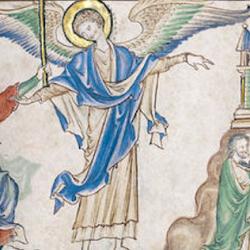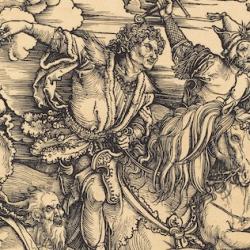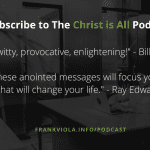A strong angel hands John a book, not to read but to eat (Revelation 10). The instructions and John’s compliance (vv. 9b-11) are chiastically structured:
a. He said, Take and eat.
b. It will make your stomach bitter
c. but in your mouth it will be sweet as honey.
a’/d. And I took the book from the angel’s hand and ate it.
c’. And it was in my mouth as sweet as honey
b’. and when I ate it, my stomach was bittered.
a”. And they said to me, You must prophesy.
All the parallels are obvious except the frame. At least, though, a and a” are linked because both quote a voice giving John instructions. And the rest of the passage is so clearly chiastic that we expect a closure in verse 11. And the parallel does make sense. John eats a book, and then is told to prophesy.
The initial instructions echo Jesus’ Eucharistic command, Take, eat. And the result is that John is commissioned as a prophet. Perhaps we can generalize: Every “take, eat” is a prophetic commissioning; every Eucharist is a feast of prophets, who speak of what they have eaten.










